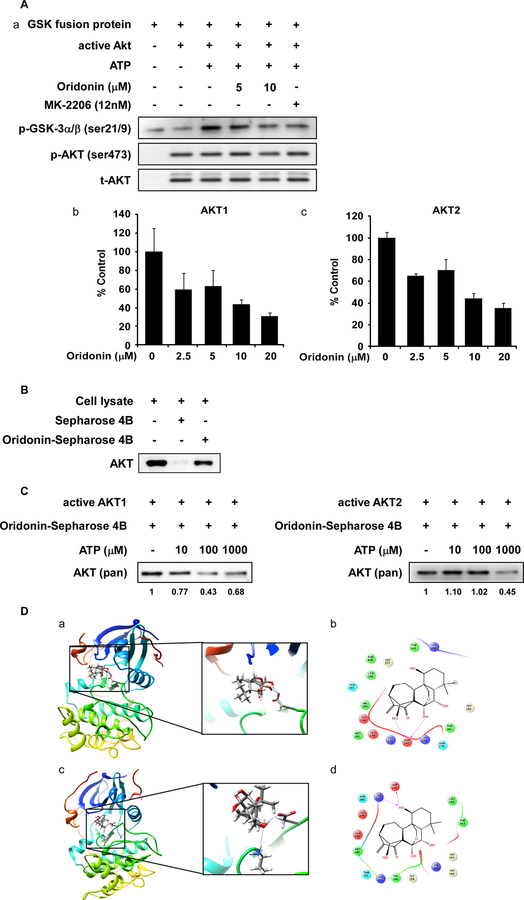Figure 2.
AKT1 and AKT2 are potential targets of oridonin. (A) The effect of oridonin on AKT activity was evaluated in an in vitro IP-AKT kinase assay (a), and AKT1 and AKT2 kinase activity assays (b-c). (B) The binding of oridonin to AKT in KYSE450 cell lysates was determined using Sepharose 4B and oridonin-conjugated Sepharose 4B beads. (C) The specificity of the binding of oridonin to active AKT1 or AKT2 in the presence of ATP was evaluated. The values below the respective bands indicate values obtained from densitometry analysis. (D) The interaction between oridonin and AKT1 or AKT2 was predicted using a computational docking model: a) oridonin binding with AKT1; b) ligand interaction diagram of oridonin binding with AKT1; c) oridonin binding with AKT2; d) ligand interaction diagram of oridonin binding with AKT2.

